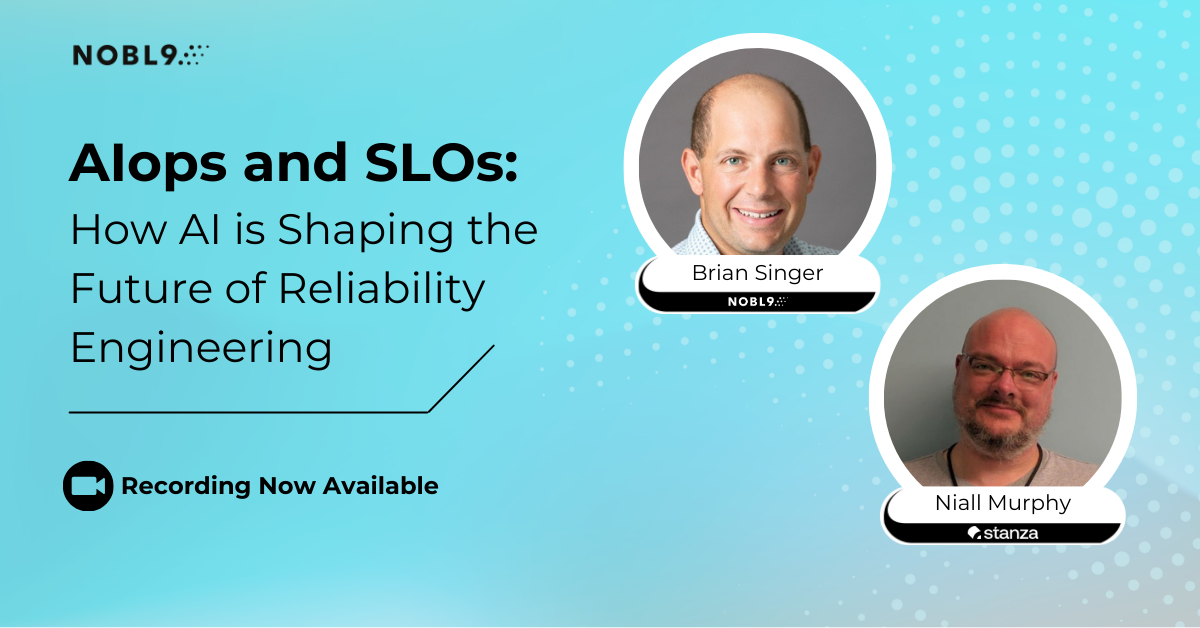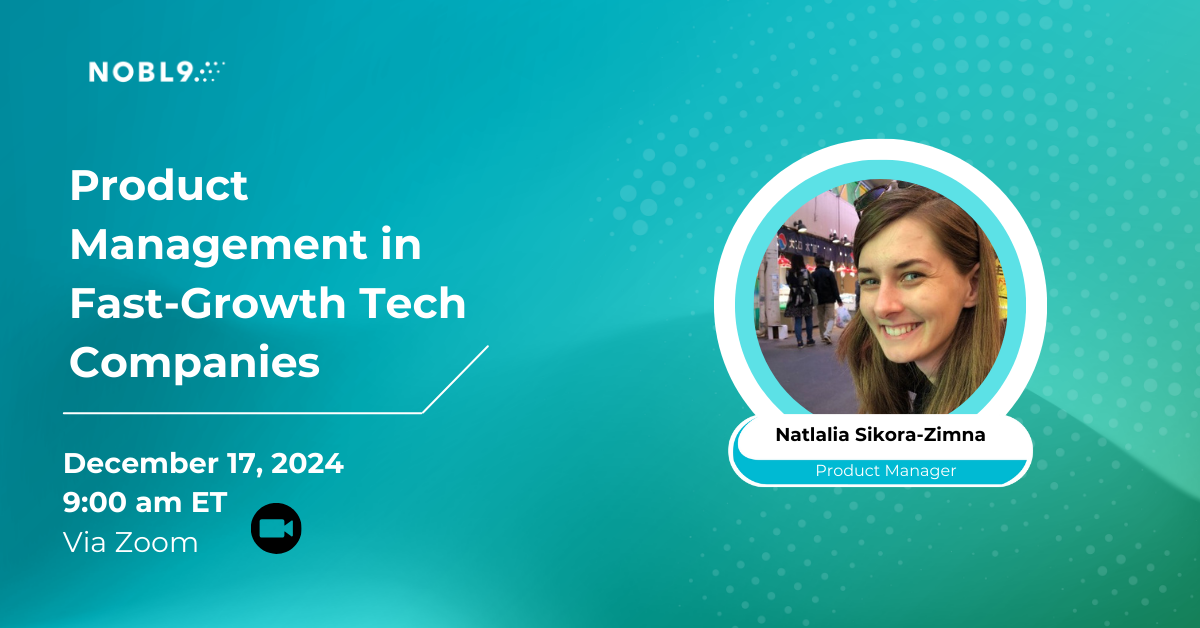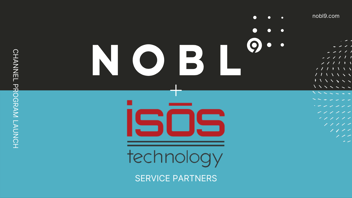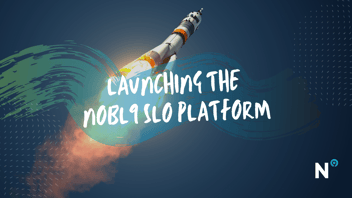More by Jenn Ordonez:
| Author: Jenn Ordonez
Avg. reading time: 3 minutes
UPDATE: Nobl9 is now GA. Try it today
We recently interviewed numerous Nobl9 users who participated in our Nobl9 SLO platform beta. Of course, we were acutely interested in our customers’ experiences with the platform, but we were also curious about the path each company had taken on its SLO journey thus far.
Without implementing SLOs, you cannot have a mature organization that properly manages risk in software development.
Everyone we talk to is at a different point along their SLO path. The most important step for teams to take is to simply start. As the saying goes, “A journey of a thousand miles begins with a single step.” In fact, taking a crawl-walk-run approach to implement SLOs is a “best practice” we discovered among our beta users. Several other universal themes emerged from our conversations:
- Reliability is a top-priority business KPI.
From credit card processing companies to network service providers, our beta customers shared and enthusiastically voiced a heartfelt belief that reliability was a cornerstone of their business. Here are a few verbatims:
“Trust is key.”
“If our platform is not reliable, our customers are going to have real bad days.”
“A lack of reliability causes big damage to our brand reputation.”
“Reliability is one of the most important features of any software.”
- Monitoring is not enough.
Nearly all of our beta customers already used at least one if not multiple monitoring tools but recognized that the SLO approach takes observability and risk management to a whole new level.
One customer said, “We’re historically good at monitoring, but we want to focus on what’s important to our users. What does the user perceive of our product? Where are the real issues that are impacting our customers?” This customer said metrics were used informally to keep themselves accountable, but nothing was institutionally adopted. Or, as they described it, “It wasn’t bubbling up through the business.” As a result, despite having ample monitoring tools, they still approached decision making as a “finger-in-the-air” exercise.
Another said, “We were using monitoring and alerts, but not really quantifying what it meant for our systems and internal services. We had no basis for objectively discussing this, and we were not tracking how a service behaves over time.”
One customer started implementing SLOs by using the entry-level SLO feature on Datadog. “Even that basic approach was better received by the business side, because it told business line managers the story they needed to hear. It wasn’t too deep down in the technical details they didn’t care about. It helped them understand how fast we could go at this stage and what it would take if they wanted to move faster.”
Others stressed just how important it is to move beyond monitoring to adopt the SLO approach. “Without implementing SLOs, you cannot have a mature organization that properly manages risk in software development,” said one. Another said, “SLO is the tool that allows us to objectively improve reliability while implementing highest velocity.”
- SLOs drive a company-wide culture change.
Part of the beauty of SLOs is that they become a new language that all stakeholders can understand. But SLOs are not just a new “talk.” Using SLOs requires “a new walk.”
Or as one customer put it, “You must have the right culture and mindset about how you approach development prioritization. And the earlier you start the better.”
Another described it as a company-wide “mental shift.” “We want to have SLOs for every service. We want to get it to the point where as we roll out new services it just becomes a part of the service development process, so that it’s just second nature.”
- SLOs expand the possibilities.
One of the most exciting themes echoed by our beta customers was their vision of what the SLO approach could do for their company in the long run as their SLO journey progresses.
“Once we have SLOs in place and have error budget to spare, we can explore and identify dependencies and do chaos engineering.”
“We’ll have healthier cross-team collaboration and the ability to surface issues to leadership.”
“We’ll be able to move faster.”
“We’ll have the ability to scale globally with confidence.”
“We’ll be confident that what we’re doing is serving our customers well, and that we can meet very large scale demands that are going to be placed on our platform.”
If you’ve embarked on your SLO journey, these common themes will surely resonate with you, and, like our beta customers, you will recognize the value that the Nobl9 SLO platform can bring. Give SLOs and the Nobl9 Platform a try.
Image Credit: @wocintechchat on Unsplash









.png?width=1200&height=628&name=Building%20Reliable%20E-commerce%20Experiences%20(24).png)
.png?width=1200&height=628&name=Building%20Reliable%20E-commerce%20Experiences%20(22).png)
.png?width=1200&height=628&name=Building%20Reliable%20E-commerce%20Experiences%20(19).png)










Do you want to add something? Leave a comment